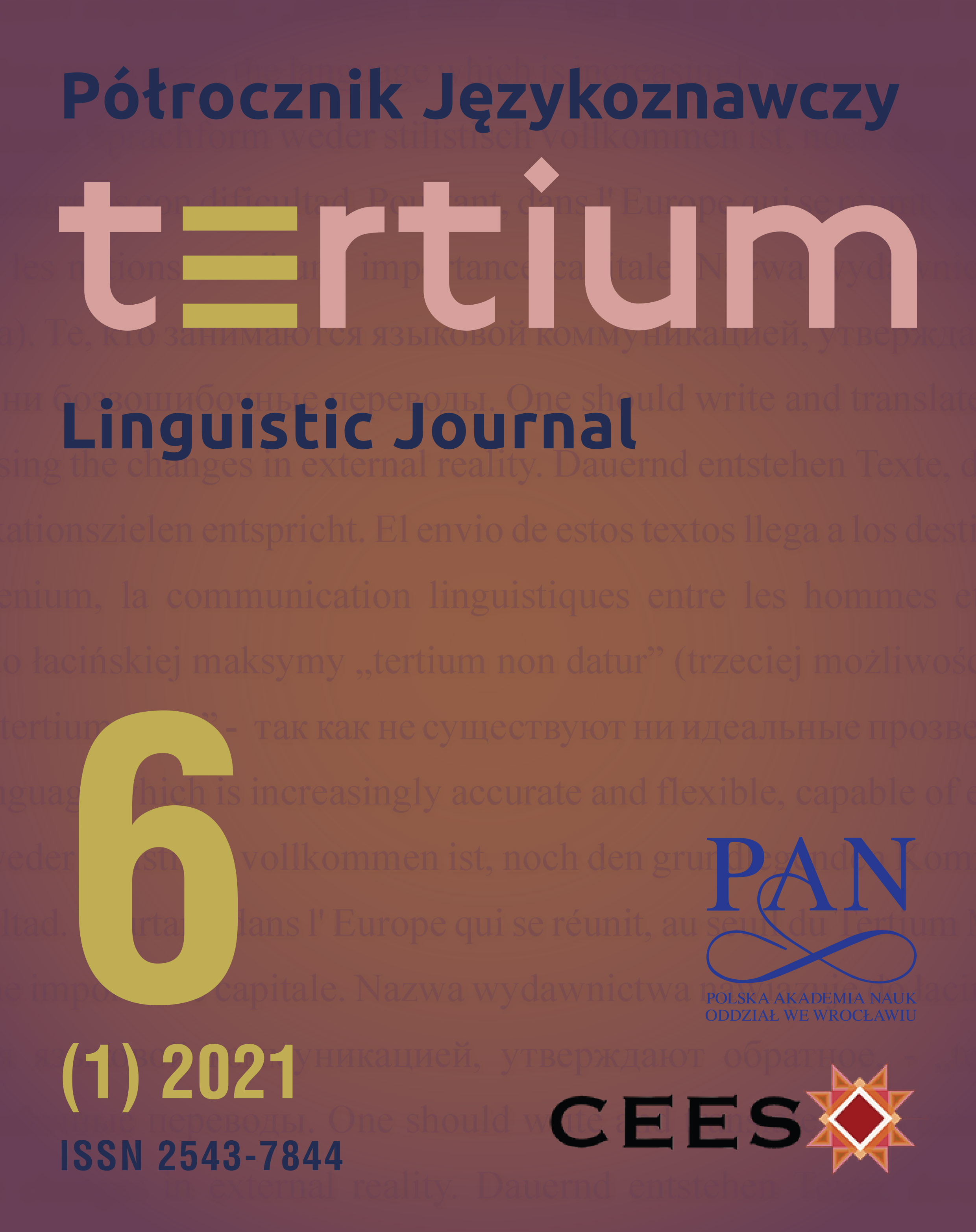Przekład i (bez)krytyczna analiza dyskursu
Translation and the (Un-)critical Discourse Analysis
Author(s): Elżbieta TabakowskaSubject(s): Anthropology, Social Sciences, Language and Literature Studies, Theoretical Linguistics, Applied Linguistics, Pragmatics, Sociolinguistics, Cognitive linguistics, Cultural Anthropology / Ethnology, Translation Studies
Published by: Krakowskie Towarzystwo Popularyzowania Wiedzy o Komunikacji Językowej Tertium
Keywords: ”cognitive turn”; cognitive linguistics; context; stereotype; critical discourse analysis; “cultural turn”; transdisciplinarity;
Summary/Abstract: Celem artykułu jest potwierdzenie tezy, że postulat transdyscyplinarności, wysuwany w rozważaniach dotyczących współczesnego przekładoznawstwa, znajduje uzasadnienie w zbieżności podstawowych założeń językoznawstwa kognitywnego, krytycznej analizy dyskursu i wiedzy o przekładzie. „Zwrot kulturowy” w przekładoznawstwie, odnotowany w tym samym czasie, co „zwrot kognitywny” w nauce o języku, oznacza możliwość wkroczenia obu dyscyplin na teren praktycznie zarezerwowany dla badań nad krytyczną analizą dyskursu. Przełamanie niechęci lub braku zainteresowania dla sąsiednich dyscyplin prowadzi do rozszerzenia wspólnej płaszczyzny działania. Tezę ilustruje studium przypadku: przykład tłumaczenia tekstu, o którego językowym kształcie decyduje szeroki kontekst społeczny i kulturowy. // The paper argues that the postulate of transdisciplinarity, put forward by today’s TS scholars, is justified by the convergence of basic principles and assumptions which underlie Cognitive Linguistics, Critical Discourse Analysis and Translation Studies. The “cultural turn” in TS occurred at the same time as the “cognitive turn” in linguistics; both make it possible for CL and TS to cross the boundary and enter the area traditionally occupied by CAD. Overcoming the feeling of mutual reluctance or lack of interest in the research carried out within neighbouring disciplines would make it possible to broaden the plane shared by the scholars. As an illustration, a case study is discussed, providing a text whose linguistic shape in translation is influenced by a broad social and cultural context.
Journal: Półrocznik Językoznawczy Tertium
- Issue Year: 6/2021
- Issue No: 1
- Page Range: 162-182
- Page Count: 21
- Language: Polish

